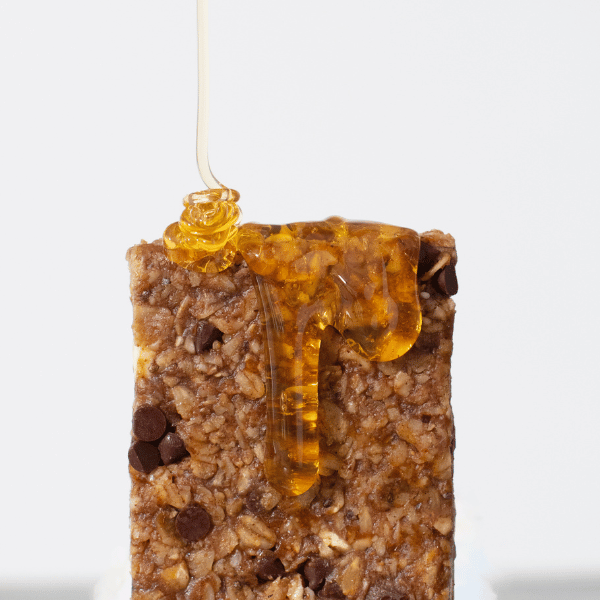When you think of honey, sugar is probably the first word that comes to mind. A sugary spoonful of honey isn’t exactly the most nutrient dense food since the main composition of honey is in fact sugars which are fructose and glucose to be exact. Honey also contains trace amounts of vitamins, amino acids, minerals and antioxidants. Winnie the Pooh might have been onto something because whether you use it as an ingredient in baked goods, stirred into your tea, drizzled in yogurt or oatmeal, or given to ease a cough, it certainly satisfies a sweet tooth and can be used as part of a healthy balanced diet.
What is honey?
We are sure you know what honey is and tastes like. But do you know how it’s made? Long story short the equal part sticky and sweet liquid made by honeybees is made when the insects extracts the nectar from the flowers, partially digests it and then regurgitates it into the honeycomb cells. Worker bees vigorously fan their wings and dehydrate the nectar gradually turning it into honey. There are about 300 different varieties of honey and its color ranges from nearly colorless to dark brown. Honey flavor also varies and depends on where the bees buzz around. Usually light-colored honey tends to be milder in taste and dark-colored honey is heavier and richer. Just like flavor, honey’s properties and composition vary depending on the floral source.
1 tbsp honey provides:
64 calories
0 gram protein
0 grams fat
17 grams carbs
0 grams fiber
Antioxidant properties
Minimally processed and high quality honey has been shown to have significant antioxidant activity. Antioxidants are molecules that protect your body from free radicals and reduce oxidative stress, both of which play an important role in the development of chronic conditions like diabetes type 2 and heart disease. The antioxidant activity in honey comes from phenolic acid and flavonoids, both of which are polyphenols. Polyphenols are a type of phytonutrient, and they play an essential role in preventing disease and maintaining health.
Antibacterial and antimicrobial
Honey is also known for its antibacterial and antimicrobial properties. The antimicrobial activity in most honeys is due to production of hydrogen peroxide that occurs during enzymatic reactions. Laboratory studies have also demonstrated that honey produces changes in the DNA structure and metabolism of bacteria and this may reduce the pathogenic potential.
Cold Symptom Relief
Researchers have found that honey is great, maybe even better than over the counter medicines, at relieving symptoms from the common cold. There have been several pediatric studies that have found that honey can be an effective way to reduce cough frequency in children older than 1 when compared to no treatment and over the counter medicines.
Promotes Wound Healing
Honey to heal wounds dates back to ancient Egypt. The healing properties of honey are due to its ability to provide the wound a moist condition, its antibacterial activity, and its viscosity, which provides a protective barrier. But before you smear honey on your burn or cut, talk to your doctor because honey as a topical treatment needs to come from medical-grade honey. Unfortunately the honey bear that you buy at your grocery store will not cut it when it comes to promoting wound healing.
How to Include Honey in Your Diet
As always with nutrition it’s best and important to consider the full picture. Honey does contain vitamins and minerals but to really reap those benefits you would have to eat a lot of honey and thus sugar. It’s important to note that sugar is devoid of essential vitamins and minerals while honey does have some in trace amounts. The American Heart Association recommends limiting added sugar to 6 teaspoons per day for women and 9 teaspoons per day for men. Even though honey is a natural source, it is still considered an added sugar and consuming sugar in excess amounts has been implicated in increased risk for chronic disease like diabetes and heart disease. Same as when eating other carbohydrates, it’s best to eat honey with a source of protein, fiber and/or fat to prevent spikes in your blood glucose.
By Mariana Dineen
Mariana Dineen MS, RD, CDN, LD, LDN is a registered dietitian and the founder of Elemento Health. Mariana was born and raised in Mexico but currently lives in Chicago with her husband and 3 children. Her mission is to change the nutrition landscape and make an impact on the health outcomes of Hispanics by providing culturally authentic nutrition care.

